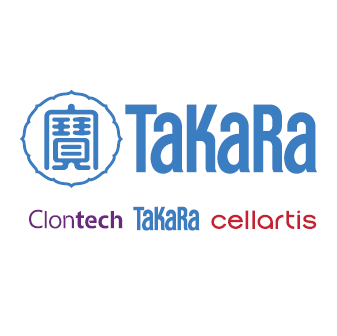SMARTer Mouse TCR a/b Profiling Kit
SMARTer Mouse TCR a/b Profiling Kit
SMARTer Mouse TCR a/b Profiling Kit—obtain full-length sequences of TCR-alpha and TCR-beta V(D)J variable regions
The SMARTer Mouse TCR a/b Profiling Kit provides a powerful new solution for those seeking to perform T-cell receptor (TCR) repertoire analysis using NGS. The kit employs a 5'-RACE-based approach to capture complete V(D)J variable regions of TCR transcripts, starting from as little as 10 ng to 500 ng of total RNA obtained from mouse spleen, thymus, or PBMCs, or from 1,000 to 10,000 purified T cells. As the name suggests, the kit can be used to generate data for both TCR-alpha and TCR-beta chain diversity, either in the same experiment or separately.
In contrast with TCR profiling methods that involve PCR multiplexing, each round of library amplification utilizes a single primer pair for each TCR subunit, thereby increasing efficiency and reducing the potential for primer-dimer formation. Multiplex PCR-based approaches are known to promote primer-associated, sequence-specific bias; this bias does not exist with our RACE-based approach, as all variable regions are primed from the same constant-region sequence. Using our ~4-hr protocol, libraries produced with the kit are indexed and ready for sequencing on Illumina platforms.
Overview
- Complete V(D)J sequence information—obtain full-length sequences for variable regions of TCR mRNA transcripts.
- TCR-alpha and TCR-beta—profile diversity for both TCR subunits, either in the same experiment or separately.
- No multiplex PCR required—amplify sequences for each TCR subunit with a single primer pair per reaction.
- Illumina-ready sequencing libraries—incorporate Illumina adapter and index sequences in a ligation-independent manner, and multiplex up to 96 libraries in a single flow-cell lane.
Applications
- Mouse TCR repertoire analysis (TCR-alpha and TCR-beta subunits)
Library preparation workflow and PCR strategy for TCR profiling using the SMARTer approach

Library preparation workflow and PCR strategy for TCR profiling using the SMARTer approach. Panel A. Reverse transcription and PCR amplification of TCR subunit mRNA sequences. First-strand cDNA synthesis is primed by the TCR dT Primer and performed by an MMLV-derived reverse transcriptase (RT). Upon reaching the 5′ end of each mRNA molecule, the RT adds non-templated nucleotides to the first-strand cDNA. The SMART-Seq v4 Oligonucleotide contains a sequence that is complementary to the non-templated nucleotides added by the RT, and the oligo hybridizes to the first-strand cDNA. In the template-switching step, the RT uses the remainder of the SMART-Seq v4 Oligonucleotide as a template for the incorporation of an additional sequence on the end of the first-strand cDNA. Full-length variable regions of TCR cDNA are selectively amplified by PCR using primers that are complementary to the oligonucleotide-templated sequence (SMART Primer 1) and the constant region(s) of TCR-α and/or TCR-β subunits (TCRa and/or TCRb Mouse Primer 1). A subsequent round of PCR is performed to further amplify variable regions of TCR-α and/or TCR-β subunits and incorporate adapter sequences using a TCR Primer 2 Forward HT Index and a TCRa and/or TCRb Mouse Primer 2 Reverse HT Index. Included in the primers are adapter and index sequences (Read 2 + i7 + P7 and Read 1 + i5 + P5, respectively) that are compatible with the Illumina sequencing platform. Following purification, size selection, and quality analysis, the TCR cDNA library is ready for sequencing. Panel B. Semi-nested PCR approach for amplification of TCR-α and/or TCR-β subunits. The primer pairs used for the first round of amplification capture the entire variable region(s) and most of the constant region(s) of TCR-α and/or TCR-β cDNA. The second round of amplification retains the entire variable region(s) of TCR-α and/or TCR-β cDNA and a smaller portion of the constant region(s). The anticipated size of the final TCR library cDNA (inserts + adapters) is ~700–800 bp.
Assessment of TCR diversity in mouse spleen samples with the SMARTer Mouse TCR a/b Profiling Kit

Assessment of TCR diversity in mouse spleen samples with the SMARTer Mouse TCR a/b Profiling Kit. Panel A. To compare TCR diversity between the spleen's general T-cell population and purified CD4+ T cells, total splenocytes were isolated from spleen and divided into two groups. The first group was left untouched, and the second group was subject to CD4+ T-cell purification (see Methods section for details). Total RNA was extracted from the total splenocyte group and the group enriched for CD4+ T cells, and each RNA sample was used for library preparation. Panel B. Proportion of on-target reads mapping to TCR-α or TCR-β CDR3 sequences. Panel C. Rarefaction curves showing the relationship between read depth and the number of unique clonotypes identified for TCR-α (left) and TCR-β (right). When a curve starts to flatten off, the number of unique clonotypes identified is reaching saturation. Dashed lines show the theoretical number of clonotypes as the number of reads increases.
Assessment of TCR-α clonotype diversity in various tissues of transgenic mice of different ages with the SMARTer Mouse TCR a/b Profiling Kit

Assessment of TCR-α clonotype diversity in various tissues of transgenic mice of different ages with the SMARTer Mouse TCR a/b Profiling Kit. Panel A. The percentage of reads mapping to TCR-α CDR3 sequences identified in the thymus, spleen, peripheral lymph nodes (PLN), mesenteric lymph nodes (MLN), and large intestine (LI) is consistent across the 16-week-old, 34-week-old, and 38-week-old mice. Panel B. The immune tissues showed the highest TCR-α clonotypic diversity, while the large intestine showed the lowest diversity. This indicates that the large intestine has the lowest T-cell infiltrate. Panel C. Abundance of the TRAV3-2-TRAJ58 clonotype, expressed as a percentage of all reads mapping to any TCR-α or TCR-β clonotype, across tissue types and ages. Panel D. Abundance of the TRAV16N-TRAJ56 clonotype, expressed as a percentage of all reads mapping to any TCR-α or TCR-β clonotype, across tissue types in the 38-week-old mouse.


